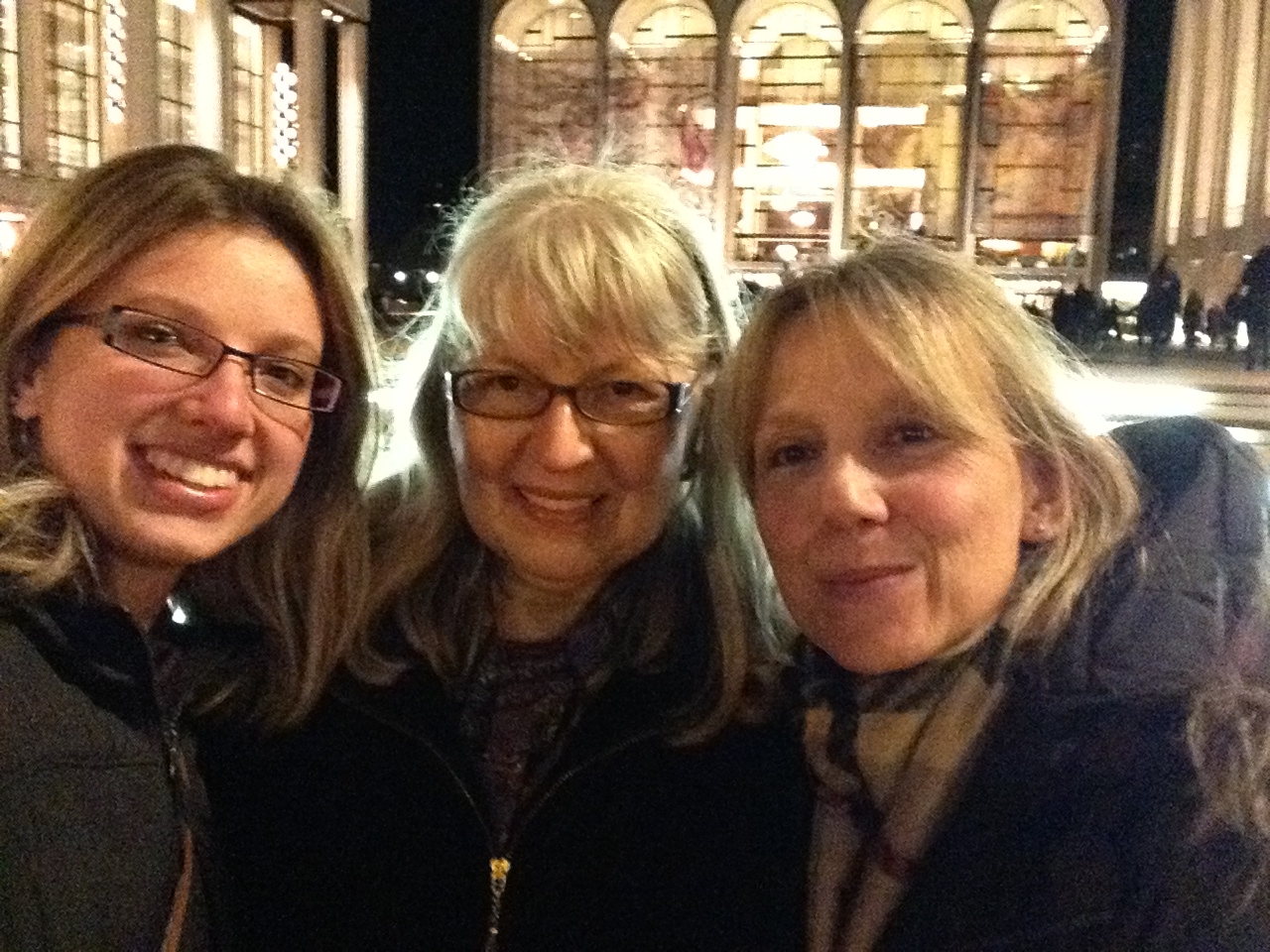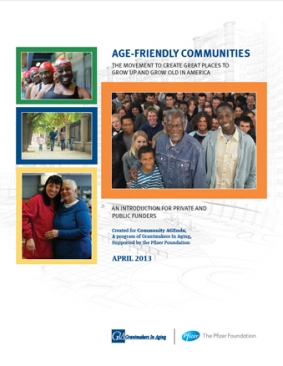 Marcia Brown (center) and friends at Lincoln Center, New York City
Marcia Brown (center) and friends at Lincoln Center, New York City“Diversity, small children, and dogs.”
“A nice park with good paths for walking or wheelchairs.”
“Good transportation.”
“A flower and vegetable garden.”
“Museums, grocery stores, clinics, senior centers, churches, and an opera house all within walking distance.”
“Sunshine.”
These are a handful of responses I got when I asked one of my favorite over-65-year-olds, Marcia Brown, Executive Assistant at the Hartford Foundation, how she defines an “age-friendly community.” (She had many ideas on this topic and I stopped her after “a nearby French bistro, a bagel shop, a pizza place, a shop that sells children’s clothing, a day care center, a school, and a pet store.”)
Defining (much less creating) an age-friendly community is a daunting task that among many things, requires engagement of key stakeholders (ahem, starting with older adults), consensus, and partnerships. With the aging of our population, many innovative groups have done just this. They have created blueprints and implemented plans to design communities that leverage the strengths of its members and serve as models of great places to age.
In 2012, Grantmakers In Aging -- a membership organization that serves as a national catalyst for philanthropy -- launched the Community AGEnda: Improving America for All Ages Initiative with funding from the Pfizer Foundation. This initiative aims to enhance and accelerate age-friendly communities across the U.S.
To model good behavior, Community AGEnda is working with five communities in Arizona, Florida, Georgia, Indiana, and Kansas City to “accelerate their efforts to become great places to grow up and grow old.” One-year grants of $150,000 have been awarded to each to galvanize their pioneering efforts and build communities that represent the needs of their older citizens and create an environment where all can thrive.
For example, The Greater Phoenix Region Aging in Place Network plans to implement the “Village” model in selected communities. This consumer-driven model provides support services to help members age in place. To begin their work, they will conduct surveys of neighborhoods, develop business plans, leverage aging in place agencies, and establish a web site that engages older adults.
Amy St. Peter, Human Services and Special Projects Manager of Maricopa Association of Governments (the Phoenix grantee), noted, “The Community AGEnda project is helping realign our approach to aging. We are exploring new options that leverage the time and talents of older adults to improve their lives and strengthen the community as a whole. Local foundations, nonprofit agencies, and local governments are partnering with Grantmakers In Aging and the Pfizer Foundation to make this work possible.”
Check out what all five Community AGEnda awardees are doing here.
In addition to the site-based work, through the Community AGEnda initiative Grantmakers In Aging aims to raise awareness of the need to grow age-friendly environments. Moreover, they have provided tools and resources to get cities, urban planners, nonprofits, funders, and the Marcias of the world started.
 First is an inspiring report, Age-Friendly Communities:The Movement to Create Great Places to Grow Up and Grow Old in America: An Introduction for Private and Public Funders. This document spotlights notable age-friendly programs, highlights issues and best practices, and offers insight from top thought leaders.
First is an inspiring report, Age-Friendly Communities:The Movement to Create Great Places to Grow Up and Grow Old in America: An Introduction for Private and Public Funders. This document spotlights notable age-friendly programs, highlights issues and best practices, and offers insight from top thought leaders.
Next is a searchable database of more than 200 aging-friendly development efforts across the U.S. The free database includes brief summaries of the work and contact info.
And lastly, we have Aging Power Tools: A Curated Selection of Resources to Promote Stronger, Age-Friendly Communities. Here Grantmakers In Aging has done all the leg work; they gathered best practices and assembled a toolkit rich with materials to empower funders, local governments, and community groups to make change.
In a recent Huffington Post blog, John Feather, CEO of Grantmakers In Aging, summed up the importance of the age-friendly movement which is “working to make it possible for older adults to stay mobile, to volunteer -- and, in some cases -- to continue working, to contribute to their families and neighborhoods and most importantly, to maintain a sense of purpose and belonging.”
Take a look. Use the materials. Get involved. Help Marcia get the good transportation she deserves. And the French bistro.
